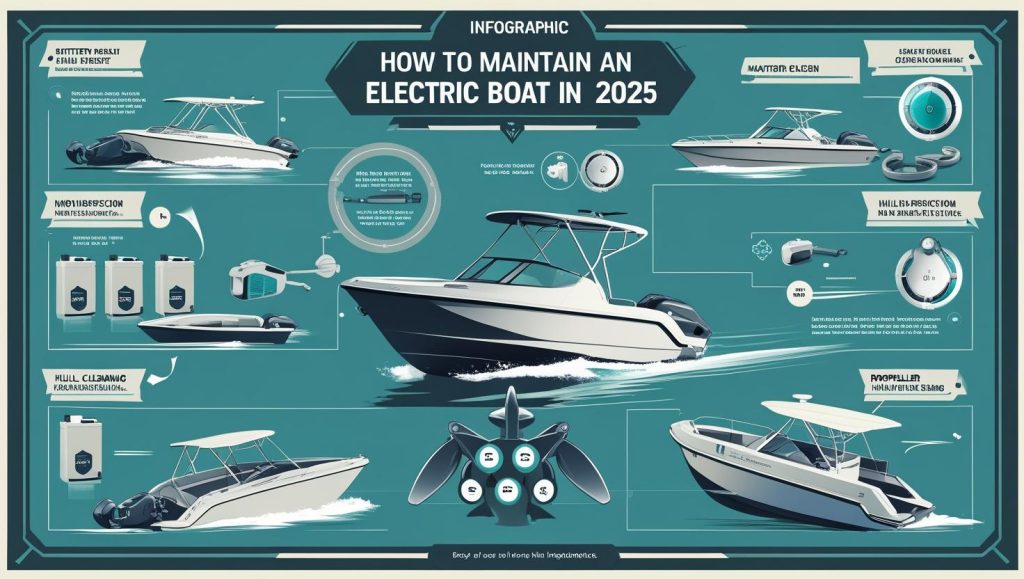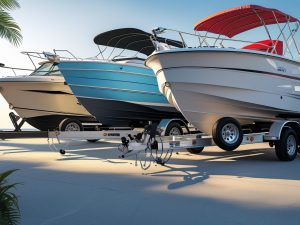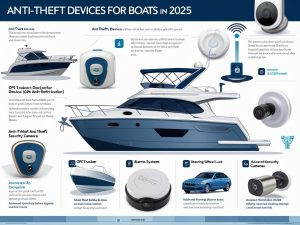
Electric boats have gained immense popularity in recent years due to their eco-friendliness, quiet operation, and low operating costs. As we enter 2025, advancements in marine electric propulsion make these vessels more reliable than ever. However, like any vehicle, electric boats still require regular maintenance to perform at their best and prolong their lifespan.
This comprehensive guide covers how to maintain an electric boat in 2025, offering tips, best practices, and frequently asked questions to help you stay ahead of potential issues and maximize efficiency.
Why Electric Boat Maintenance Is Crucial in 2025
As electric boats evolve, their systems become more efficient but also more complex. In 2025, many electric boats come equipped with advanced lithium-ion batteries, smart diagnostics, regenerative braking, and AI-powered autopilot systems. Regular maintenance ensures:
-
Battery longevity
-
Efficient propulsion performance
-
Safety of onboard electronics
-
Smoother operation and fuel (energy) efficiency
-
Higher resale value
Whether you own a personal electric boat, a rental fleet, or a commercial electric ferry, following a consistent maintenance schedule is key.
Routine Maintenance Checklist for Electric Boats
To keep your electric boat in peak condition, follow this monthly and seasonal checklist:
Weekly/Monthly Maintenance
-
✅ Check and clean battery terminals
-
✅ Inspect cooling systems for leaks or blockages
-
✅ Confirm software updates and firmware integrity
-
✅ Clean solar panels (if equipped)
-
✅ Test emergency systems (bilge pump, nav lights)
Seasonal Maintenance (Every 3–6 Months)
-
✅ Perform a full diagnostic scan using onboard tools
-
✅ Inspect cables and connectors for corrosion or damage
-
✅ Lubricate mechanical parts like steering components
-
✅ Clean and apply anti-fouling coatings to the hull
-
✅ Test backup power or redundant battery systems
Battery Care and Management
In 2025, most electric boats use LiFePO4 (Lithium Iron Phosphate) or Solid-State Batteries due to their longevity and safety profile. Here’s how to maintain them properly:
Key Battery Maintenance Tips
-
Charge Smart: Use a marine-grade smart charger compatible with your battery chemistry. Avoid overcharging or deep discharging.
-
Monitor Temperature: Keep battery temperatures between 15°C to 35°C. Use thermal management systems or ventilation.
-
Use BMS (Battery Management System): Always install and monitor the BMS for voltage balancing, health stats, and fault alerts.
-
Storage: Store batteries at 50–60% state of charge (SOC) during winter or prolonged non-use.
Pro Tip: Install a solar-powered trickle charger to maintain charge without frequent plugging.
Motor and Propulsion System Maintenance
Electric boat motors are significantly more straightforward than gas engines. Still, they require upkeep to ensure maximum efficiency.
Maintenance Steps:
-
Clean Cooling Channels: Whether water-cooled or air-cooled, ensure no obstructions.
-
Inspect Motor Bearings: Listen for unusual noise or resistance.
-
Check Shaft Alignment: Misalignment leads to inefficiency and damage.
-
Monitor Propeller Condition: Look for chips, cracks, or entanglements.
Brushless DC motors, the standard in 2025, need minimal internal maintenance but benefit from regular system checks.
Charging Systems and Dockside Maintenance
The charging system is the backbone of your boat’s operation. Here’s how to maintain it:
-
Use waterproof marine-grade connectors and inspect them frequently.
-
Check dock power connections for ground fault protection.
-
Clean corrosion-prone contact points with dielectric grease.
-
Monitor smart charging systems for voltage irregularities.
If you rely on inductive charging (a wireless trend growing in 2025), ensure proper alignment and periodic sensor recalibration.
Hull and Structural Maintenance
Electric boats often use lightweight composite hulls to improve range. Protect them with:
-
Regular Washdowns: Use fresh water to remove salt and grime.
-
UV Protection: Apply marine-grade wax or coatings to protect against sun damage.
-
Hull Inspections: Look for hairline cracks or delamination.
-
Anti-Fouling: Apply environment-friendly coatings to reduce drag and bio-growth.
Also inspect rudders, fins, and thrusters periodically, especially for signs of electrolysis or impact damage.
Electronics, Software, and Diagnostic Tools
Modern electric boats are tech-heavy, featuring touchscreens, GPS, Wi-Fi, Bluetooth, and AI systems. Keep your onboard electronics functional by:
-
Updating firmware regularly from manufacturer portals.
-
Checking waterproof seals and gaskets.
-
Using diagnostic apps to monitor motor, battery, and GPS performance.
-
Testing all sensors, including sonar and radar if equipped.
In 2025, many boats come with predictive maintenance systems—use these AI tools to schedule future services based on usage.
Seasonal Maintenance Tips
Spring Preparation
-
Fully charge and cycle batteries.
-
Test all safety equipment.
-
Inspect hull for winter storage damage.
-
Update all system firmware.
Summer Use
-
Clean cooling vents weekly.
-
Inspect battery thermal management system.
-
Use shade covers to prevent overheating.
Fall Storage
-
Drain water systems.
-
Disconnect and store batteries safely.
-
Cover the boat with UV and moisture protection.
-
Document any needed repairs for spring.
Environmental Compliance and Sustainability
Maintaining an electric boat means more than mechanical care—it’s about sustainable practices too.
-
Dispose of battery components responsibly using certified recycling centers.
-
Use eco-friendly cleaning supplies to protect marine life.
-
Comply with local electrical safety inspections for dockside installations.
-
Participate in Green Marina programs to stay updated with sustainable practices.
FAQs on Maintaining Electric Boats in 2025
1. How often should I service my electric boat?
You should conduct a minor service every month and a full diagnostic every 3–6 months. Annual professional inspection is recommended.
2. What is the lifespan of electric boat batteries in 2025?
Modern lithium and solid-state batteries can last between 8 to 15 years with proper care.
3. Can I charge my electric boat with solar panels only?
Yes, but only if you have a large enough solar array and use the boat lightly. Most users still need dockside charging for full performance.
4. Is maintenance cheaper for electric boats than gas-powered ones?
Absolutely. Electric motors have fewer moving parts, no oil changes, and fewer mechanical issues, making maintenance more cost-effective.
5. Do I need a special license to maintain an electric boat?
No, but it’s best to work with certified marine electricians when dealing with high-voltage systems.
6. Can I perform diagnostics using my smartphone?
Yes. Most modern electric boats include smartphone apps or Bluetooth-enabled diagnostic tools compatible with Android and iOS.
7. What’s the cost of maintaining an electric boat annually?
Depending on usage, expect to spend between $500 to $1,500 annually, much lower than traditional fuel-powered vessels.
Final Thoughts
Electric boats are leading the marine revolution in 2025. With lower emissions, quieter rides, and smarter systems, they’re a solid investment for the future. However, they demand responsible and proactive maintenance to operate safely and efficiently.
Following the steps outlined above ensures that your boat will not only last longer but also deliver top-tier performance season after season. Stay ahead with smart tools, clean energy habits, and consistent care, and your electric boat will remain a reliable companion on the water for years to come.






